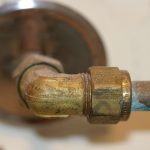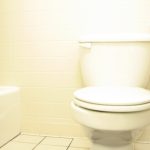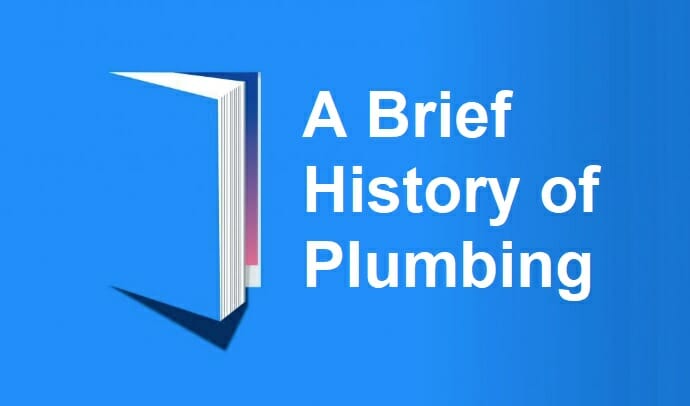We’ve all become reliant on plumbing in the modern age to deliver clean water to our homes and remove the wastewater. Our water is pressurized to make it easier to use, and we can take a shower any time we like to get clean and fresh. Every person has access to water in their homes, but it hasn’t always been this way, and our plumbing has been evolving over thousands of years. In this article, we will take a brief look at the history of our plumbing.
The Indus River Valley – 4,000 to 3,000 B.C.
The ancient Indus River Valley civilization was located in what is today the border of Pakistan and Northwest India. Archaeologists excavating the area have found the very first evidence of plumbing piping. These pipes were hewn from stone, and they would have carried water to public areas.
Egypt – 2,500 B.C.
The Egyptian civilization persevered for many centuries, but some people may be unaware of their advances in plumbing. Evidence of quite elaborate plumbing systems made from copper has been found in royal bathrooms. Copper piping was also used for irrigation and to remove sewage from inside the Pyramids.
Crete – 1,500 B.C.
The long gone Minoan civilization used water cistern extensively to store potable water. These basins were large, and they could have stored a great deal of water for drinking, cooking, bathing, and cleaning, during extended dry spells in that arid climate.
Rome – 500 B.C. to 455 A.D.
When most people think about ancient plumbing, it’s likely that the Roman Empire will feature heavily in their thinking. Many of us already know about the aqueducts constructed to carry water into the city, the public baths, and the basic sewage system. In fact, the words “plumber” and “plumbing” both come from “plubum,” which is the Latin word for lead. Many plumbing systems were made from lead because it was a soft and easy metal to use. There were eleven aqueducts serving Rome, fresh water was brought into the city from as far as 50 miles away, and pressurized gravity systems were used for indoor plumbing systems. Despite being the largest city in the world at the time, Rome was a fairly sanitary place to live, and most of the waste was carried away using lead plumbing pipes. During the fall of the Roman Empire, some historians believe that the lead leaching into the water helped to affect the physical and mental health of Roman inhabitants and that this helped to hasten the empire’s demise.
Germany – 1455 A.D.
German metal workers become the first to learn how to make a fire hot enough to cast iron into shapes. This allows them to build cast iron pipes that engineers first install in the town of Siegerland.
England – 1596 A.D.
Courtier, poet, translator, and author Sir John Harrington, whom Queen Elizabeth I referred to as her “Saucy Godson,” invents the worlds first ever flushing toilet. The design was sound, but the waste would be removed straight down and although useable foul odors would be emitted.
Scotland – 1755 A.D.
Alexander Cummings was a watchmaker and inventor, and he was fascinated with improving on the flushing toilet design. Eventually, he fell upon the idea of adding an S-bend into the waste pipe. This would allow a certain volume of water to remain in the bowl after flushing, and this would reduce the smell of the sewage from the waste pipe. Every modern toilet made today has a variation on this type of clever innovation.
Philadelphia – 1804 A.D.
In this year, The City of Brotherly Love became the first city to convert its entire water delivery network to cast iron pipes.
Boston – 1829 A.D.
At this point in history, indoor plumbing was still very rare except in the private residences and homes of the wealthy. The Tremont Hotel in Boston changed that by being the first hotel to offer certain rooms with indoor plumbing for their guests. The Tremont had a total of eight separate water closets, but only the wealthiest guests could afford those special rooms.
New York – 1830 A.D.
After a series of devastating structure fires, the city of New York realized that they needed a better water delivery system to supply their firefighting crews. To meet this need to protect homes and businesses, New York became the first city in the world to install a public water main and hydrants.
Washington, D.C. – 1833 A.D.
During the Andrew Jackson presidency indoor plumbing was added to the main floor of the White House. It wasn’t until the presidency of Franklin Pierce in the mid 1850s until the upper floor received the same plumbing upgrade.
Chicago – 1885 A.D.
Chicago becomes the first modern city in the world to have a comprehensive sewer system. In the years to come, it will be the model that every other American city will follow to service the growing urban populations.
England – 1891 A.D.
A professional plumber and inventor named Thomas Crapper created a valve and siphon system for flushing toilets. This further improved on the design, making the modern toilet easier to flush and changing how all toilets would be built in the future.
United States – 1966 A.D.
Due to a critical shortage of copper and other useful plumbing metals, new materials for plumbing pipes and systems were needed. This led to the use of PVC plastic pipes and fixtures, much like those that we use today.
Japan – 1986 A.D.
This year saw the first wave of sensor activated flushing toilets for public use in Japan. These have now become a common feature in every public restroom there.
The Future
We are consistently seeing the evolution of
plumbing all over the world. Many innovations are simply more advanced and easier to use versions of the plumbing inventions that we have seen throughout our history. Due to a growing global population and water scarcity, it’s likely that we will see a move to plumbing systems that need far less water in the future.
By Giovanni Longo President Flood Brothers Plumbing
Giovanni Longo is a 3rd generation master plumber who has been practicing his craft and trade in the greater Los Angeles area for well over a decade and a half. A plumbing and hydraulics-engineering innovator, Giovanni’s particular world-class expertise focuses on dealing with challenging sewer system designs as well as resolving complex commercial and residential draining issues. As a certified Flood Mitigation expert, he is also well versed in a wide variety of water damage and remediation solution.





